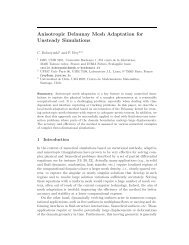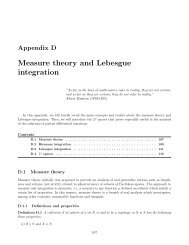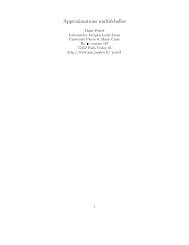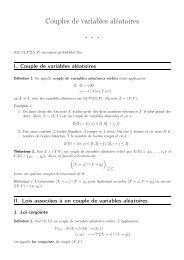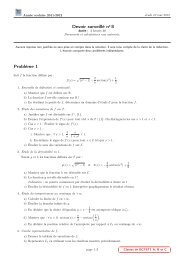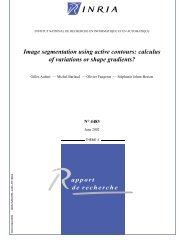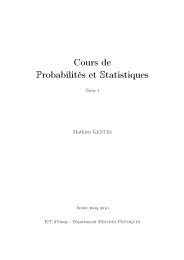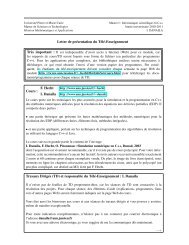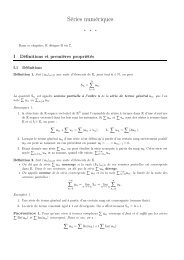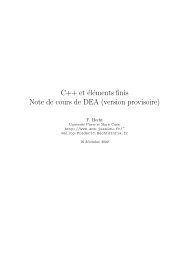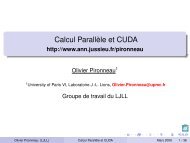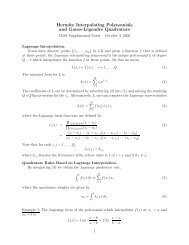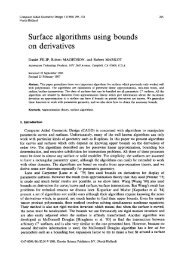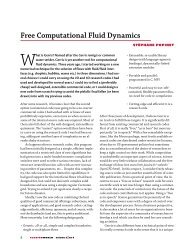pdf file
pdf file
pdf file
Create successful ePaper yourself
Turn your PDF publications into a flip-book with our unique Google optimized e-Paper software.
2 M. LEWIN, P. T. NAM, S. SERFATY, AND J. P. SOLOVEJ<br />
1. Introduction<br />
In a famous paper [9], Bogoliubov was able to predict the excitation spectrum<br />
of a quantum gas satisfying the Bose statistics and he used this to<br />
understand its superfluid behavior. Since Bogoliubov’s work, there has<br />
been several attempts to formulate Bogoliubov’s theory in a mathematically<br />
rigorous way. This was especially successful for completely integrable<br />
1D systems [21, 35, 32, 12, 11, 59, 60], for the ground state energy of one and<br />
two-component Bose gases [41, 42, 55], and for the Lee-Huang-Yang formula<br />
of dilute gases [19, 22, 64]. Recently, Seiringer [52] and Grech-Seiringer [24]<br />
have for the first time justified Bogoliubov’s theory for the excitation spectrum<br />
of trapped Bose gases, with a general short range interaction, in the<br />
mean-field regime. See, e.g., [65] for a recent review on the subject and [15]<br />
for a discussion of translation-invariant systems.<br />
The purpose of this article is to give general conditions under which Bogoliubov’s<br />
theory is valid, that is, predicts the lowest part of the spectrum<br />
of the many-body Hamiltonian of bosons, in the mean-field regime. Our<br />
results cover a very large class of interacting Boses gases and they generalize<br />
the recent works [52, 24]. In particular, our method applies to Coulomb<br />
systems.<br />
We consider a system of N quantum particles, described by the Hamiltonian<br />
N� 1 �<br />
HN = Txi + w(xi −xj),<br />
N −1<br />
i=1<br />
1≤i



